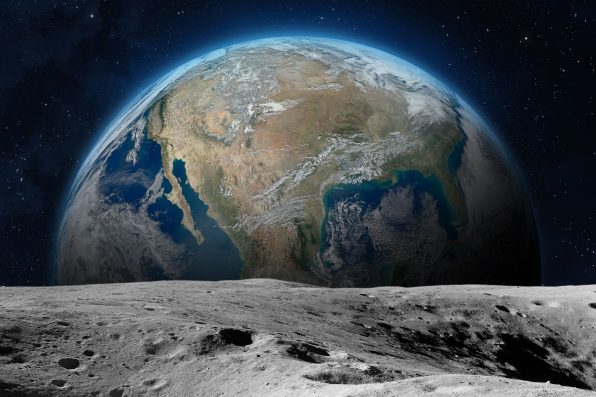A New Study Argues That Archaeologists Should Be Involved In Space Missions To Analyze, Document, And Preserve Artifacts Left On The Moon

Scattered around the solar system are bits and pieces of material left behind by various space missions, including Apollo 17 in 1972, which was the last time that humans had set foot on the moon.
As NASA and other agencies plan to send humans to the moon again later in the decade, researchers from the Kansas Geological Survey at the University of Kansas have proposed the idea of planetary geoarchaeology.
In a new study, they argue that archaeologists should get involved in space missions to see how the lunar environment is changing human artifacts left on the surface. If possible, any spacecraft, experiments, or trash can be preserved.
Since the start of space exploration, humans have launched over 6,700 satellites and spacecraft from around the globe. The United States alone is the source of more than 4,500 satellites in space.
The researchers are working to draw attention to the analysis, documentation, and preservation of artifacts on the moon because they are at high risk of disappearing forever, especially with the upcoming planned lunar missions by some countries.
“The United States is trying to get boots on the moon again, and China is as well. We’ve already had at least four countries accidentally crash into the moon recently. There are a lot of accidental crashes and not a lot of protections right now,” Holcomb said.
According to the Encyclopedia of Global Archaeology, space archaeology is “the study of material culture associated with space exploration from the twentieth century onward.” Space exploration first began around the 1920s, so artifacts are roughly a century old.
Planetary geoarchaeology will be a new subfield of space archaeology. It refers to the study of how cultural and natural processes of a world, such as Earth’s moon and Mars, affect artifacts on the surface of the world.
Satellites and spacecraft traveling to another world don’t count as planetary geoarchaeological sites because they are still in orbit. However, their crash or landing sites would qualify.

revers_jr – stock.adobe.com – illustrative purposes only
So, how will experts decide what artifacts are worth preserving? Holcomb and colleagues believe that all material existing on extraterrestrial surfaces deserves to be protected since they are part of the space heritage of the U.S.
But, it will require case-by-case decision-making to sift through the hundreds of thousands of materials currently up in space.
Holcomb says that “the moon has such a limited record now that it’s totally possible to protect all of it.” Unfortunately, resources for protecting space heritage are in short supply.
The researchers are advocating for the development of tracking systems to keep tabs on all materials left in space.
Not only will the tracking systems help with recording objects, but they can also monitor human impact on extraterrestrial environments.
The researchers hope that planetary geoarchaeology can be applied to Mars as well. With geoarchaeologists on mission teams, the safety of space heritage on Mars, Earth’s moon, and across the solar system will be ensured.
Sign up for Chip Chick’s newsletter and get stories like this delivered to your inbox.
More About:News